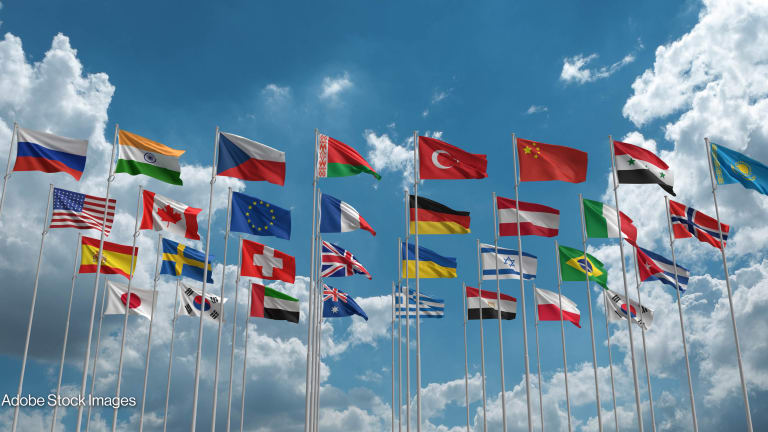
These days, the word “multilateralism” is viewed in some corners as taboo. It’s easy to forget how international cooperation is deeply embedded in our daily lives. From weather forecasts to air travel to internet protocols, partnership across borders keeps the modern world moving. To preserve the system that makes such advances possible, we must retool and evolve the organizations that underpin it.
Today’s international institutions — the United Nations, World Bank Group, and the International Monetary Fund, to name a few — were built for a different world. There is little doubt that their foundational goals remain critically relevant. But the world around them has changed dramatically.
The pressing question now is not whether multilateralism still matters — it does, more than ever — but whether the system we have is prepared to deliver in a world that looks nothing like the one in which it was crafted. Indeed, there is clear momentum for change. In a speech to member states about the UN80 Initiative on May 12 at the U.N., Secretary-General António Guterres made it abundantly clear: “Let us seize this momentum with urgency and determination, and work together to build the strongest and most effective United Nations for today and tomorrow.”
Certainly, reform efforts are not new. What’s different now is the urgency and the opportunity. From climate change to artificial intelligence to migration, the world’s most complex challenges cannot be tackled by any single country. We need international cooperation that is not only reactive but also anticipatory — institutions that are not just functional, but efficient and future-proof.
A pragmatic path forward for the U.N., World Bank, IMF, and other international organizations lies in five priorities: rebuild trust; modernize mandates; rethink the process of coalition building; embrace flexibility; and partner more thoughtfully with the private sector.
Rebuild trust
This isn’t just about rebuilding trust between countries, but between institutions and the people they serve. That means continuing to elevate and clearly communicate the tangible results that international cooperation delivers — in daily life, in global crises, and in laying the groundwork for future resilience.
It also involves continuing the vital work of aligning institutional representation with today’s geopolitical and economic realities. Developing and advanced economies alike are looking to multilateral frameworks not just for support but as platforms for growth, balanced competition, and meaningful global engagement.
Modernize and merge mandates
Many multilateral organizations are navigating the challenges of legacy mandates and set ways of working that have evolved over time. In some cases, this has led to overlapping efforts, complexity, and rigid processes whose original purposes may no longer be relevant.
Conducting a transparent and constructive review of these mandates can help clarify priorities and create opportunities for refinement. Applying the tool kit of synergy identification and post-merger integration readily available in the world of business can prove invaluable at this moment.
Retool for efficiency
Rigorously reevaluating institutional processes, ways of working, and duplicative back-office systems and functions can help eliminate waste and redirect capacity to the highest value work. Drawing on lessons from both public and private organizations that have undergone agile and shared services transformations could offer useful approaches for improving agility, efficiency, accountability, and measurable outcomes.
Embrace more flexible approaches to negotiation
Historically, some of the most effective agreements — for example, the Montreal Protocol — began with focused, committed coalitions. They started small and expanded. This phased approach can offer a blueprint for future multilateral efforts: Start where there is energy, create proof points, and scale from there. Indeed, initiating negotiations on global issues with almost 200 countries at the outset is unlikely to ever deliver the most ambitious outcomes.
Leverage the private sector
Look to the private sector as a provider of good practice and value delivery, not just as a donor. Businesses, particularly in emerging areas such as AI and sustainability, often move faster and with more expertise than public sector institutions. Multinational companies are already stakeholders in a stable, rules-based global system.
Bringing them in earlier, more strategically, and more meaningfully can bridge the gap between innovation and policy. Initiatives such as the Water Resilience Coalition, which brought companies together under the U.N. Global Compact and the Pacific Institute to address water scarcity across 15 water-stressed river basins across Asia, Africa, South America, and North America, show what’s possible.
Drawing strength from deep roots
Preservation often conjures the image of protection — shielding something from harm. But as any gardener will tell you, sometimes the best way to preserve a tree is to prune it. You sculpt with the intention to promote new growth. The same principle applies to international institutions today.
This is not a moment to lament the fragmentation of the old order. It is a moment to recognize the opportunity to build a stronger, more distributed, and more inclusive model for international cooperation — one that is deliberately structured, methodically designed, and future-proofed for the complexities ahead.
The world is not short on problems; it is short on coordinated, sustained responses. International cooperation — properly reimagined — remains our best bet for solving problems that cross frontiers, time zones, and generations. So let us prune with purpose. Let us reform not to discard, but to strengthen.
Explore how global cooperation can thrive in a divided world. Read BCG’s latest insights on the future of international cooperation.




